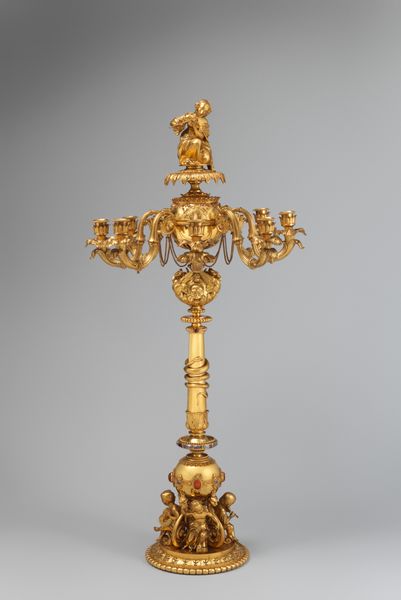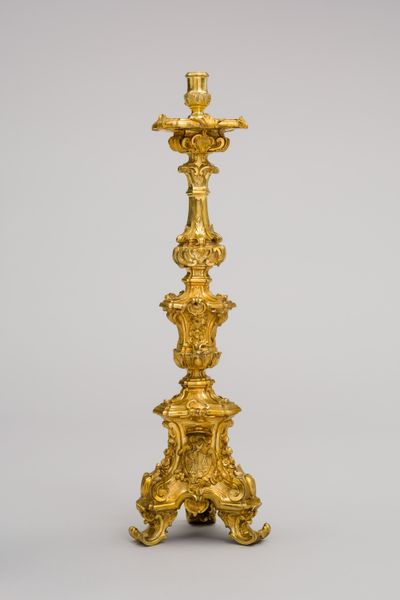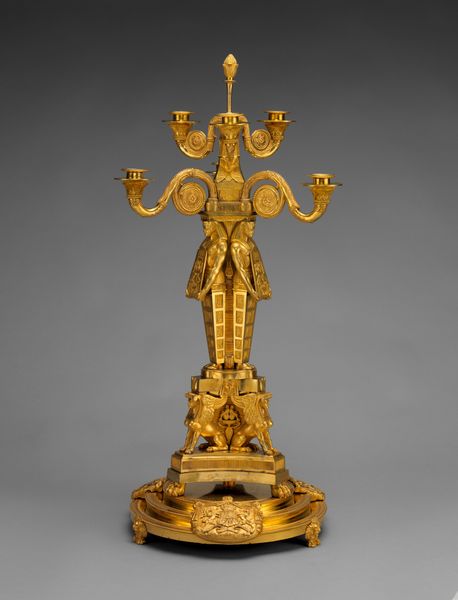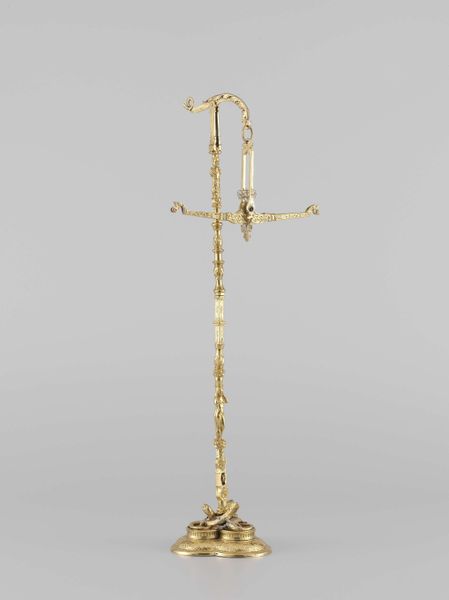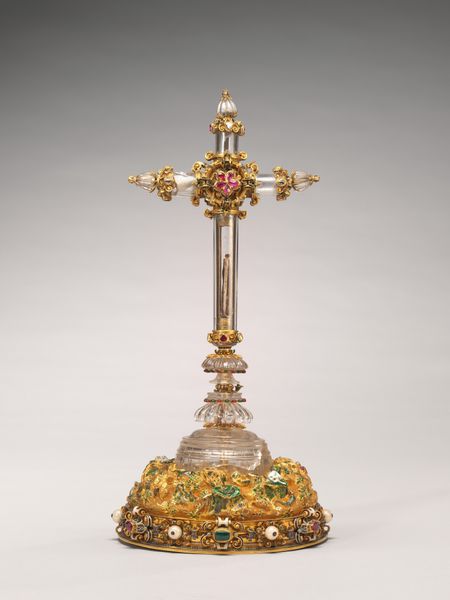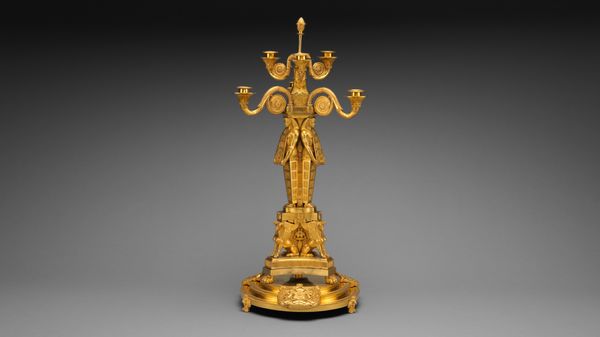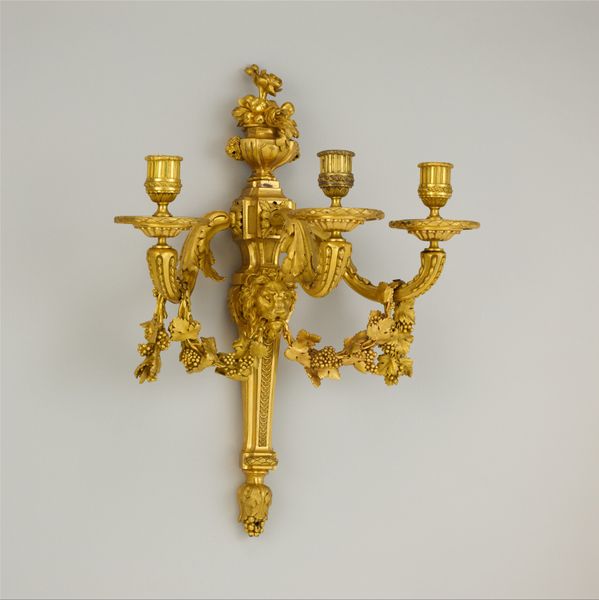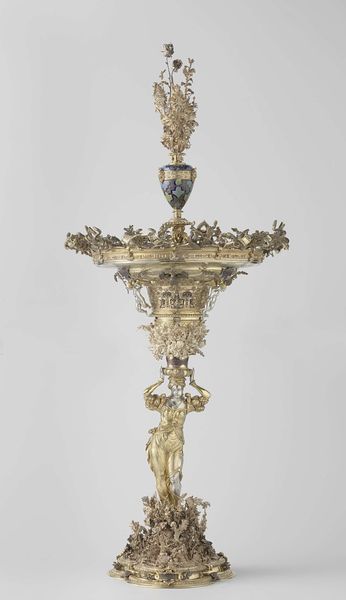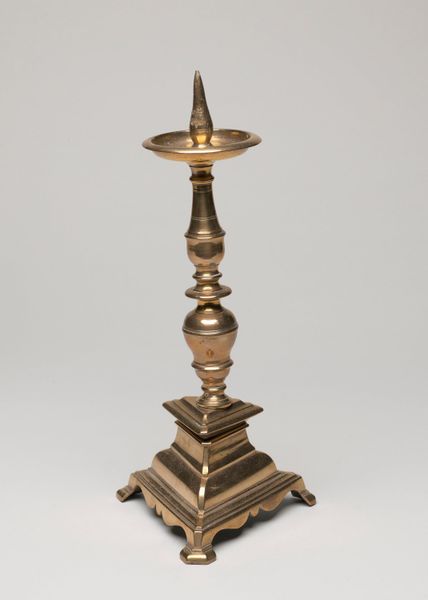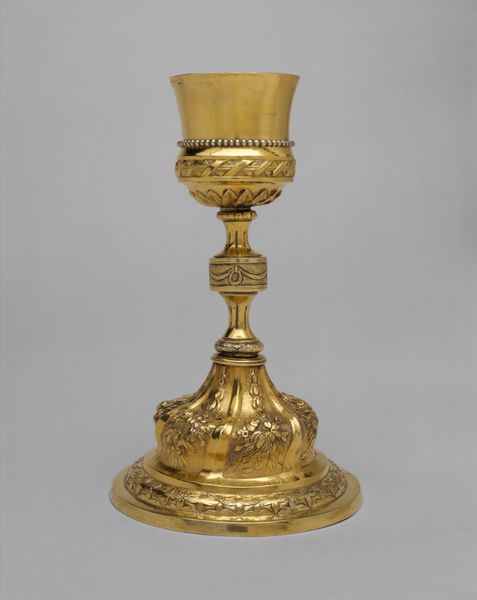
Dimensions: 95.3 × 31.4 cm (37 1/2 × 12 3/8 in.)
Copyright: Public Domain
Editor: This is "Cross with Corpus," made around 1765-1766 by Leandro Gagliardi. It's made of bronze, gold, and what looks like some other metal. It has an undeniably opulent feel. How do you approach a piece like this? Curator: From a materialist perspective, the combination of bronze and gold is key. The economic disparity inherent in the preciousness of gold versus the industrial applications of bronze speak volumes about the patronage and intended audience. What kind of labor practices were involved in mining, smelting, and manipulating these materials into this form? Editor: That’s fascinating, I never considered the implications of combining these materials. It just looked "gold" to me. I guess I didn't consider where those materials came from. How did those methods impact artistic production itself? Curator: Exactly. The Baroque period, reflected in the work’s style, demanded extravagance, often at the expense of those producing the raw materials and crafting the final object. Each flourish, each embellishment on this cross, is a testament to both skill and exploitation. How do we reconcile the beauty of the craftsmanship with the realities of its production? Editor: So it becomes not just a religious object but also evidence of social stratification at the time. Thinking about the gold especially, I wonder what percentage of the population would have even had any exposure to such precious materials in that era. Curator: Precisely. Its materiality is inextricably linked to social power and economic control. Can we truly separate the aesthetic experience from the underlying power dynamics that facilitated its creation? Editor: I think that’s given me a much deeper appreciation for how to really analyze the layers behind the aesthetic. Curator: And for recognizing art's complex engagement with its production.
Comments
No comments
Be the first to comment and join the conversation on the ultimate creative platform.
